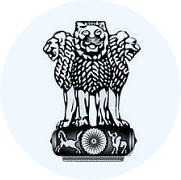UPSC Exam > UPSC Videos > History for UPSC CSE > Tribal & Peasant Uprisings: The Revolt of 1857
Tribal & Peasant Uprisings: The Revolt of 1857 Video Lecture | History for UPSC CSE
FAQs on Tribal & Peasant Uprisings: The Revolt of 1857 Video Lecture - History for UPSC CSE
| 1. What were the causes of the Revolt of 1857? |  |
Ans. The Revolt of 1857, also known as the Indian Rebellion of 1857, was triggered by various factors such as the introduction of new rifles with cartridges greased with animal fat, which offended both Hindu and Muslim soldiers. Other causes included economic grievances, resentment towards British policies, and the dissatisfaction of Indian rulers with the British East India Company.
| 2. How did the tribal and peasant uprisings contribute to the Revolt of 1857? |  |
Ans. The tribal and peasant uprisings played a significant role in the Revolt of 1857. They provided support and a strong base for the rebellion, as they were already discontented with British policies such as high taxes, land confiscation, and exploitative revenue systems. The grievances of these groups merged with the wider rebellion, leading to a more widespread and coordinated uprising against British rule.
| 3. What were the major events during the Revolt of 1857? |  |
Ans. Several major events took place during the Revolt of 1857. The rebellion began with the mutiny of sepoys in Meerut on May 10, 1857. It then spread to various regions, including Delhi, Lucknow, Kanpur, and Jhansi. The rebels captured Delhi and declared Bahadur Shah II as their emperor. The British launched counter-offensives, leading to intense battles and sieges. The rebellion was eventually suppressed by the British, and the Mughal Empire came to an end.
| 4. How did the Revolt of 1857 impact the Indian freedom struggle? |  |
Ans. The Revolt of 1857 had a significant impact on the Indian freedom struggle. It is considered as the first large-scale rebellion against British rule in India and served as a major inspiration for future freedom fighters. The revolt exposed the exploitative nature of British colonialism and led to increased nationalist sentiments among Indians. It also contributed to the formation of political organizations and movements that later played crucial roles in the fight for independence.
| 5. How did the British suppress the Revolt of 1857? |  |
Ans. The British employed various strategies to suppress the Revolt of 1857. They implemented a policy of brutal repression, crushing rebel strongholds, and executing rebel leaders. The British forces also used divide-and-rule tactics, exploiting differences among rebel groups. They adopted a scorched-earth policy, destroying villages and crops to weaken the rebels. Additionally, the British received support from loyal Indian troops, princely states, and reinforcements from British colonies, which ultimately helped them regain control.
Related Searches





















